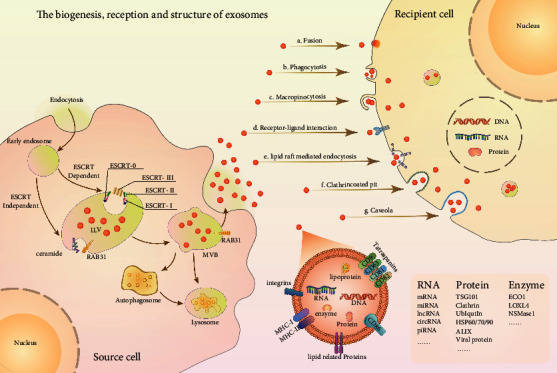Figure 1.

Schematic illustration of the biogenesis, secretion, absorption, and composition of exosomes. Exosome biogenesis initiates with the process of inward budding of the cell membrane, which is called endocytosis, followed by the formation of endosomes. Then the ILVs were formed by the invagination of the endocytic membrane into the organelle lumens; thus the endosomes turn into MVBs. The MVBs fuse with the plasma membrane through ESCRT-dependent or ESCRT-independent pathways to release exosomes, otherwise, fusing with lysosomes for degradation or ending up to autophagosomes. Subsequently, the released exosomes can be uptaken by recipient cells via fusion, phagocytosis, micropinocytosis, receptor-ligand interaction, lipid raft mediated endocytosis, and clathrin or caveola coated pit. Exosome contains an assortment of bioactive cargos, including RNA, protein, and enzyme.
